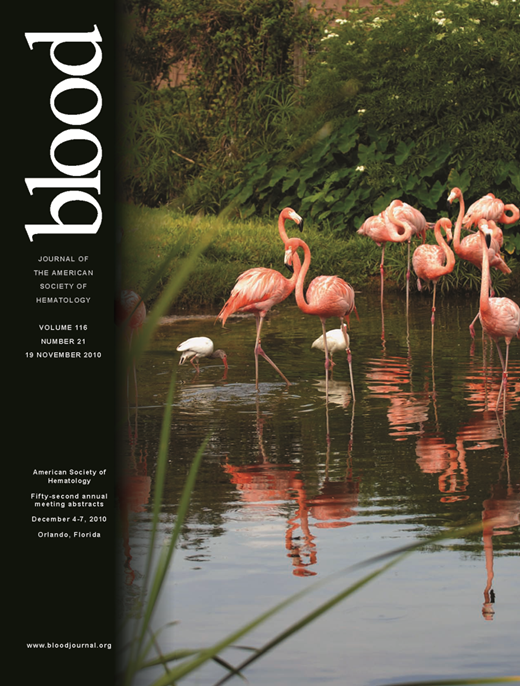Abstract
Abstract 2709
RUNX1 is a critical transcription factor in the regulation of normal hematopoiesis. Inherited RUNX1 mutations have been identified as the culprit genetic lesion in Familial Platelet Disorder (FPD; OMIM 601399), a rare autosomal dominant condition with a propensity to myeloid malignancy. The spectrum of RUNX1 mutations causing the FPD/acute myeloid leukemia (AML) syndrome includes frameshift and termination mutations detected throughout the gene, and missense mutations clustered within the highly conserved RUNT homology domain (RHD), which is responsible for both DNA binding and heterodimerization with CBFβ/PEBP2β, the non-DNA binding regulatory subunit. We present a new FPD/AML pedigree with a novel missense mutation leading to a single amino acid change, L56S. This L56S mutation is the first reported point mutation in this syndrome to be found outside of the RHD.
Our new pedigree involves a 41-year-old man (proband) diagnosed with myelodysplastic syndrome (MDS, specifically refractory anemia with excess blasts type-2) with a normal karyotype. He was initiated on azacitidine, which was administered on a seven-day treatment schedule every four weeks. Bone marrow biopsy analysis after six monthly cycles of azacitidine showed persistent MDS, with similar findings after a total of ten monthly cycles. Given his lack of a clinical response, his young age and good performance status, he was referred to The University of Chicago for allogeneic hematopoietic stem cell transplantation (HCT). Routine pre-transplant evaluation revealed mild thrombocytopenia (platelets = 123,000 K/μl) in his HLA-matched brother. In addition, his father was reported to have thrombocytopenia. Clinical concern for an inherited condition initiated the investigation for a RUNX1 mutation in the family.
We sequenced full-length cDNA synthesized from leukocyte-derived RNA collected from the proband's sibling with thrombocytopenia, and detected a novel missense germline mutation in exon 4 at nucleotide position 371, causing a T to C mutation leading to a single amino acid change in the RUNX1 protein, L56S. This amino acid substitution is located N-terminal to the RHD (aa 76–209). RUNX1 sequencing of the proband with MDS demonstrated the same mutation. The RUNX1 RHD and the transactivation domain remain intact in this mutant. Initial transactivation assays using a luciferase reporter assay performed in triplicate demonstrated similar levels of activation as wild-type RUNX1. Corresponding Western blot analysis showed similar levels of protein expression of both wild-type RUNX1 and mutant RUNX1 transfected cell lines using an anti-RUNX1-antibody. Current studies include determination of the transactivation ability of mutant RUNX1 with its heterodimerization partner, CBFβ/PEBP2β, testing the DNA binding ability of this RUNX1 mutant by electrophoretic mobility shift assay, and analysis of the RUNX1 cDNA for an acquired biallelic mutation in leukocytes collected from the proband's bone marrow aspirate at the time of diagnosis of bone marrow malignancy.
FPD/AML is likely an underreported condition. Clinical suspicion for this inherited syndrome may be raised by the presence of mild to moderate thrombocytopenia in healthy siblings, and should lead to prompt screening for germline RUNX1 mutations to confirm an inherited predisposition and to prevent siblings carrying RUNX1 mutations from being selected as HCT donors. In vitro studies of identified RUNX1 mutations may elucidate potential mechanisms involved in the pathogenesis of the FPD/AML syndrome.
No relevant conflicts of interest to declare.
Author notes
Asterisk with author names denotes non-ASH members.

